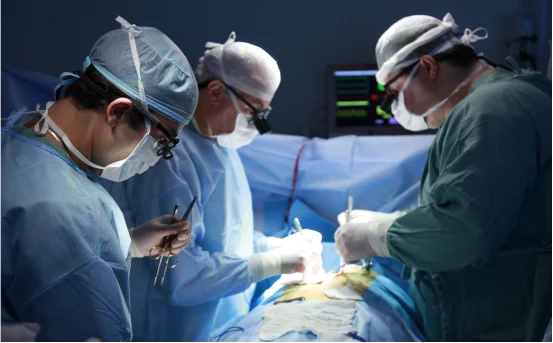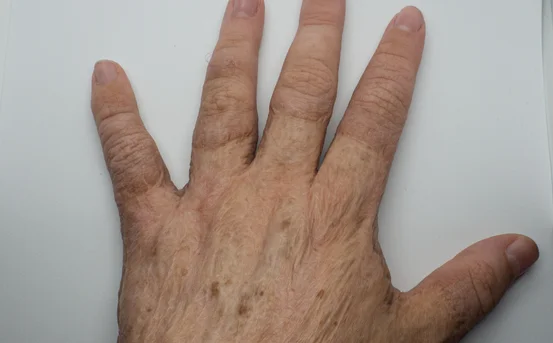Oculoplastic surgery is a specialized field that merges ophthalmology and plastic surgery to address a variety of medical and cosmetic conditions around the eyes. Whether for functional repair or aesthetic enhancement, oculoplastic procedures are gaining popularity due to their precision, safety, and transformative results.
Oculoplastic surgery, also known as ophthalmic plastic and reconstructive surgery, is a highly specialized branch of ophthalmology that focuses on correcting deformities, defects, and disorders of the eyelids, orbit (eye socket), tear ducts, and surrounding facial areas. It blends the precision of eye care with the artistry of plastic surgery to improve both appearance and function.
What Is Oculoplastic Surgery?
Oculoplastic surgery, also known as ophthalmic plastic surgery, focuses on the structures surrounding the eyes, including the eyelids, orbit (eye socket), tear ducts, and eyebrows. These procedures are often performed by ophthalmologists who have received additional fellowship training in plastic and reconstructive surgery of the periorbital area.
The primary goal of oculoplastic surgery is to restore function and improve appearance while preserving or enhancing the patient’s vision. It serves both cosmetic and medical purposes and can range from correcting drooping eyelids to treating eye injuries or removing orbital tumors.
Who Needs Oculoplastic Surgery?
Oculoplastic surgery is recommended for individuals facing functional impairments or cosmetic concerns involving the eyes and surrounding facial structures. Common reasons for seeking this type of surgery include :-
-
Sagging or drooping eyelids (ptosis) that obstruct vision
-
Excess skin or fat in the upper or lower eyelids
-
Blocked tear ducts leading to chronic tearing or infections
-
Eyelid malpositions such as entropion (inward turning) or ectropion (outward turning)
-
Orbital trauma, tumors, or fractures
-
Cosmetic rejuvenation of the eye area
Whether you are experiencing discomfort, vision obstruction, or a desire for aesthetic improvement, consulting with an oculoplastic specialist can help determine the most appropriate treatment.
Common Oculoplastic Procedures
Oculoplastic surgery includes a variety of procedures tailored to meet specific functional and cosmetic needs. Some of the most commonly performed surgeries in this field include :-
- Blepharoplasty (Eyelid Surgery) :- Blepharoplasty is one of the most popular oculoplastic procedures and involves the removal of excess skin, fat, or muscle from the upper and/or lower eyelids. While often done for cosmetic enhancement, upper eyelid blepharoplasty can also improve vision in patients whose sagging eyelids interfere with sight.
- Ptosis Repair :- Ptosis refers to the drooping of the upper eyelid caused by weakened or stretched muscles. Ptosis repair involves tightening or reattaching the eyelid muscles to lift the eyelid and improve both vision and appearance.
- Eyelid Malposition Correction :- Conditions like entropion (eyelid turning inward) and ectropion (eyelid turning outward) can cause irritation, excessive tearing, and even damage to the eye surface. Surgical correction restores the eyelid to its natural position, providing both comfort and protection to the eye.
- Tear Duct Surgery (Dacryocystorhinostomy or DCR) :- Chronic tearing (epiphora) may result from a blocked tear drainage system. Tear duct surgery creates a new pathway for tears to drain properly, reducing discomfort and infection risk.
- Orbital Surgery :- Orbital surgery addresses issues within the eye socket, such as trauma, tumors, or thyroid eye disease. These procedures require expert surgical skills and advanced imaging to protect the eye and surrounding nerves.
- Cosmetic Oculoplastic Surgery :- For patients seeking aesthetic improvements, oculoplastic surgeons also perform cosmetic procedures like brow lifts, under-eye bag removal, and wrinkle treatments using Botox or dermal fillers. These procedures help rejuvenate the eye area while maintaining a natural look.
Benefits of Oculoplastic Surgery
Oculoplastic surgery offers a combination of functional and aesthetic benefits. Patients who undergo these procedures often experience significant improvements in their quality of life, including better vision, reduced eye irritation, and enhanced self-confidence.
From a medical standpoint, surgeries like ptosis repair and tear duct reconstruction restore essential eye functions, minimize discomfort, and prevent future complications. On the cosmetic side, oculoplastic surgery can address signs of aging and fatigue around the eyes, resulting in a more youthful and refreshed appearance.
Another key advantage of this specialty is its minimally invasive nature. Most procedures are performed on an outpatient basis, using advanced techniques that reduce recovery time and scarring.
Preparing for Oculoplastic Surgery
Before undergoing oculoplastic surgery, a comprehensive consultation is essential. Your oculoplastic surgeon will evaluate your medical history, current eye health, and aesthetic goals. Diagnostic tests, such as visual field exams or tear duct imaging, may be conducted to guide treatment planning.
Patients are usually advised to avoid blood-thinning medications and smoking in the weeks leading up to the procedure. Pre-operative instructions may also include fasting, arranging for a companion post-surgery, and reviewing aftercare guidelines.
Recovery and Aftercare
Recovery times for oculoplastic surgery vary depending on the procedure performed. In general, most patients can expect mild swelling, bruising, and discomfort for a few days to a couple of weeks. Cold compresses, prescribed medications, and head elevation can help reduce post operative symptoms.
Stitches, if used, are typically removed within 5 to 7 days. Patients are advised to avoid heavy lifting, strenuous activity, and direct sun exposure during the initial healing phase. Follow up appointments are essential to monitor healing and ensure optimal results.
Complete recovery, especially in cosmetic procedures, may take a few weeks to a few months, with results gradually becoming more noticeable over time.
Choosing the Right Oculoplastic Surgeon
Selecting a qualified oculoplastic surgeon is crucial for achieving safe and effective outcomes. Look for a board certified ophthalmologist who has completed additional fellowship training in oculoplastic or ophthalmic plastic surgery. Review the surgeon’s credentials, patient testimonials, and before and after photos to assess their expertise.
An experienced surgeon will not only ensure precise surgical technique but also prioritize personalized care, safety, and natural looking results.
Conclusion
Oculoplastic surgery is a highly specialized field that addresses both medical and aesthetic concerns related to the eyes and surrounding structures. Whether you need functional correction or cosmetic enhancement, these procedures offer effective, long lasting solutions.























